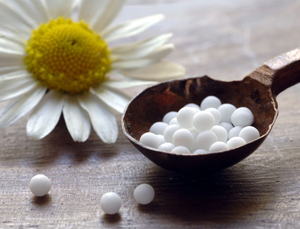New Delhi, Jun 2: Kicking the butt is actually beneficial in many ways.
Smoking takes a lot from you. Statistics says that around six million premature deaths trigger due to tobacco and around six lakhs due to passive smoking.
Dr Pankaj Aggarwal, senior homeopathy physician at Agrawal Homeo Clinic, New Delhi, says that homeopath can be a way to help you overcome that addiction of tobacco.
How homoeopathy can help in quitting smoking?
Dried tobacco leaves are mainly used for smoking in cigarettes, cigars, tobacco pipe, and flavoured shisha tobacco. Tobacco contains the alkaloid nicotine, which is a stimulant. Homeopathy has the remedies that can help reduce the nicotine craving and it increases the will power. It offers a natural way to strive with nicotine and revoke symptoms for those on the way to their smoking habit. Fortunately homeopathy can help on quitting the habit of smoking.
Dr Aggarwal says, "It is finest way to find an approach that solely works for you and eliminate the root cause of the disease with the mutual help of your loved ones and a homeopath that can form a plan which absolutely fits you."
He shares a brief about the symptoms, causes and medication to help you to bid smoking adieu.
#Signs and symptoms of nicotine withdrawal"
The nature of tobacco craving is characterised differently as per the individual, the physical and psychological factors that motivate it, alter it or enhance it could be totally different. Learning how to quit tobacco naturally can be tough but taking it step by step to quit will likely be one of the better decisions a person will make. The main road block a person can confront are the emotional triggers like: craving, mood swings and anxiety, these are due to the nicotine withdrawal and the lack of sense of verdict. Homeopathy fixes these emotional triggers and work at the safest and the deepest levels to help quitting smoking.
Nicotine removal indications will likely peak within a two or three day's period. These symptoms will habitually disappear after two weeks, but some may experience nicotine withdrawal for quite a few months. These are the symptoms allied with nicotine withdrawal:
- Depression
- Weight put on
- Sleeplessness
- Headaches
- Extreme nicotine cravings
- Nervousness, bad temper and difficulty in concentrating
- Irritation in feet and hands
- Sore throat and coughing
#Medications
Homeopathic medications should not be taken without consulting your homoeopathic doctor. Homeopathic remedies must be taken two or three times daily while withdrawal symptoms are present as directed by the doctor. It offers safe and reliable method for the treatment.
Following are the homeopathic remedies that facilitate with tobacco extraction:
- Plantago: Plantago is specified for nicotinism, its natural variety had been found to create an aversion to tobacco. When the patient complaints are depression, sleeplessness, constipation, eye pain and bad temper then it may indicate a need for its use.
-Tabacum: Those who are having the issues like nausea, vomiting, motion sickness, indigestion, hypertension, confusion and lack of concentration are given tabacum, as it assist in elimination of the toxins carried by tobacco. It has a significant effect on tobacco craving.
- Ignatia: It is a medication often used for anxiety correlated with tobacco craving and it is frequently allied with excitability and a marked sensory hypersensitivity. Other symptoms may comprise mood swings, depression, headaches, dry cough, pains in neck and back. These symptoms are worse in the morning and at the night.





Comments
Add new comment